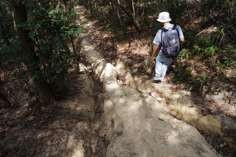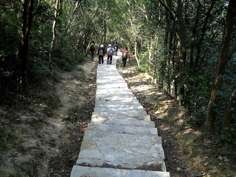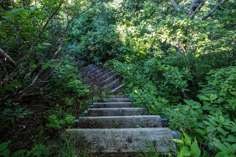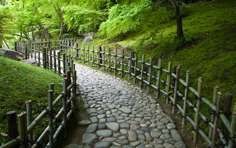![“[My survey] results show 90 per cent of people don’t like concrete hiking trails,” says Hong Kong trail runner Stone Tsang.](https://www.scmp.com/sites/default/files/styles/486w/public/images/methode/2016/03/18/5dbe689a-ebef-11e5-9451-ef5010d885b7_486x.JPG?itok=g-nfmadJ)
Hong Kong runners and hikers hit out at the growing concreting of trails
Is it just ignorance on the part of officials or don’t they care, asks champion runner Stone Tsang, who hopes to engage the city government in dialogue about the issue and suggest alternatives

Across the lush green slopes of Tai Lam Country Park that defines the skyline of the western New Territories runs an ancient trail that was once the main access route between Yuen Long and Tsuen Wan. In the old days, villagers of Shap Pat Heung used to hike with their farm produce over the mountains to Tsuen Wan Market to trade for daily necessities.
The Yuen Tsuen Ancient Trail, which is about 13km long, is now frequented by hikers, but these days it looks more like an urban pavement than a path carved out of nature. In recent years, the Agriculture, Fisheries and Conservation Department (AFCD), the government body that manages and maintains Hong Kong’s country parks, has gradually paved over the ancient trail with concrete.
It’s just one of the many examples of the increasing use of concrete to build or repair trails in the city’s country parks – a trend opposed by 90 per cent of Hongkongers, according to a recent online poll of 5,959 people.
![“[My survey] results show 90 per cent of people don’t like concrete hiking trails,” says Hong Kong trail runner Stone Tsang.](https://www.scmp.com/sites/default/files/styles/486w/public/images/methode/2016/03/18/5dbe689a-ebef-11e5-9451-ef5010d885b7_486x.JPG?itok=g-nfmadJ)
In the week-long survey, which was initiated in early March by local trail-running star Stone Tsang Siu-keung, only 3 per cent of respondents agreed with the use of concrete in country parks.
Tsang had shared the link among friends and local outdoor groups on social media, and people voluntarily did the survey. Among the respondents, 77 per cent said they were regular hikers. Though the survey was hardly scientific, it is the first of its kind.
“The survey results show 90 per cent of people don’t like concrete hiking trails. They think this will destroy the natural environment. Concrete hiking trails don’t attract people to the country parks; people would choose to avoid it instead,” says Tsang.
He also set up a Facebook page “Concern Group on Concretisation on Hong Kong Natural Trails” (www.facebook.com/HongKongNaturalTrails), which has garnered more than 2,340 likes to date.
“I really dislike hiking on concrete,” says Claire Mizrahi, a recreational hiker. “It is bad for knees and it looks like an attempt against nature. I don’t find them to be safer, either... When you go hiking, you want to spend quality time among trees and grass, not on city-like sidewalks.”
The debate over the use of concrete in country parks is not new; the topic has been brought up in departmental meetings, articles have been written and a few petitions have been signed.
One petition, started by common interest group Hong Kong Hiking Meetup in November 2013, garnered 1,295 signatures through an online petition, “AFCD: stop putting concrete steps over natural trail in our Country Parks” on change.org.
The department says the need to protect excessively eroded trails – for conservation as well as for safety – is one of the main reasons for using concrete.
At an AFCD Country Parks Visitor Liaison Group meeting in 2006, one participant pointed out that the use of concrete in path construction was intrusive to the natural settings and would damage the ankle joints of long-distance hikers.
The authorities replied that natural material was used for path construction as far as was feasible taking into account technical and environmental conditions. Trail maintenance would take into consideration aspects such as the purpose and grading of the trail (for example, a trail designated as a family walk would be levelled to accommodate all abilities) and gradient of trail (to avoid excessive erosion).
Further, there are a number of trails accessing villages in the vicinity of country parks that are managed by district offices; the department noted that these trails are normally concreted to facilitate the daily activities of villagers. These concrete paths also facilitate access by the physically challenged.


One such village path that was recently paved is a route that Tsang frequents: a trail that goes uphill from near Kam Sheung train station for a few hundred metres to the start of the Tai Lam Chung Country Trail. Tsang says the trail used to be a narrow, single-track natural trail. About two months ago, the trail was widened to about two metres and a concrete path was laid; a few benches made of perfectly cut thick slabs of polished stone were also installed.
Tsang called the Home Affairs Department, which told him that some villagers had requested the concrete path be built. The AFCD did not object.
“People have complained about the use of concrete, but I’m not simply complaining,” Tsang says. “I want to understand why the government uses concrete. Is it a lack of knowledge or they don’t care?”


By speaking to fellow hikers and trail runners in Taiwan, Japan and Europe, Tsang has gathered information about how these countries build and maintain natural trails. In Japan, for example, natural materials such as wood, stone and sandbags are used to reinforce eroded trails, he says.
“If the AFCD have no knowledge about trail maintenance, we can help,” says Tsang. “Even if some of the potentially risky trails require a concrete path, other flat trails or risk-free areas should be kept natural. Yuen Tsuen Ancient Trail is a good example of how a flat path is covered with concrete.”
Apart from looking completely unnatural, Tsang lists other downsides of concrete: it impacts the ecology of the area, it’s an impervious surface, it raises temperatures (in the summer a concrete surface under the sun can be as much as 8 degrees Celsius warmer than ambient temperature), and it’s harder on the joints.

Professor Andrew Malone, an honorary professor at Hong Kong University’s department of Earth sciences, suggests there are alternatives to concrete on the trails.
“Places such as Switzerland and New Zealand will follow nature-friendly practices in the design, construction and maintenance of typical hill trails and could serve as a model of good practice for us to follow,” says Malone. “The atypical high-traffic, high-wear routes, especially the mass-runner routes, will need special treatment.”
Not everyone, though, seems to mind the concrete. Ten per cent of Tsang’s survey respondents did not object to concrete being used. Li Yuling, a tourist from Singapore who last month undertook her first Hong Kong hike at the Dragon’s Back in Shek O Country Park – the trail is another that has recently seen a coat of concrete – said she wasn’t bothered by the paved sections.
“Having concrete steps at steep portions might make the trail easier to climb for new hikers,” says Li.
On this point, Tsang thinks people new to hiking should pick flatter trails to begin with and then progress to more technical, steeper trails as they get better. Concreting a trail to make it more “accessible” does not make sense, he says.
The rising popularity of hiking and trail running in Hong Kong is no doubt increasing the wear and tear on the city’s trails, and as a competitor himself, Tsang acknowledges this. But concrete is a convenient solution. With the survey results and case studies, he now hopes to invite stakeholders, such as leaders of hiking and environmental groups, to join him in meeting the AFCD to discuss measures that can be taken to protect and maintain the city’s trails.
